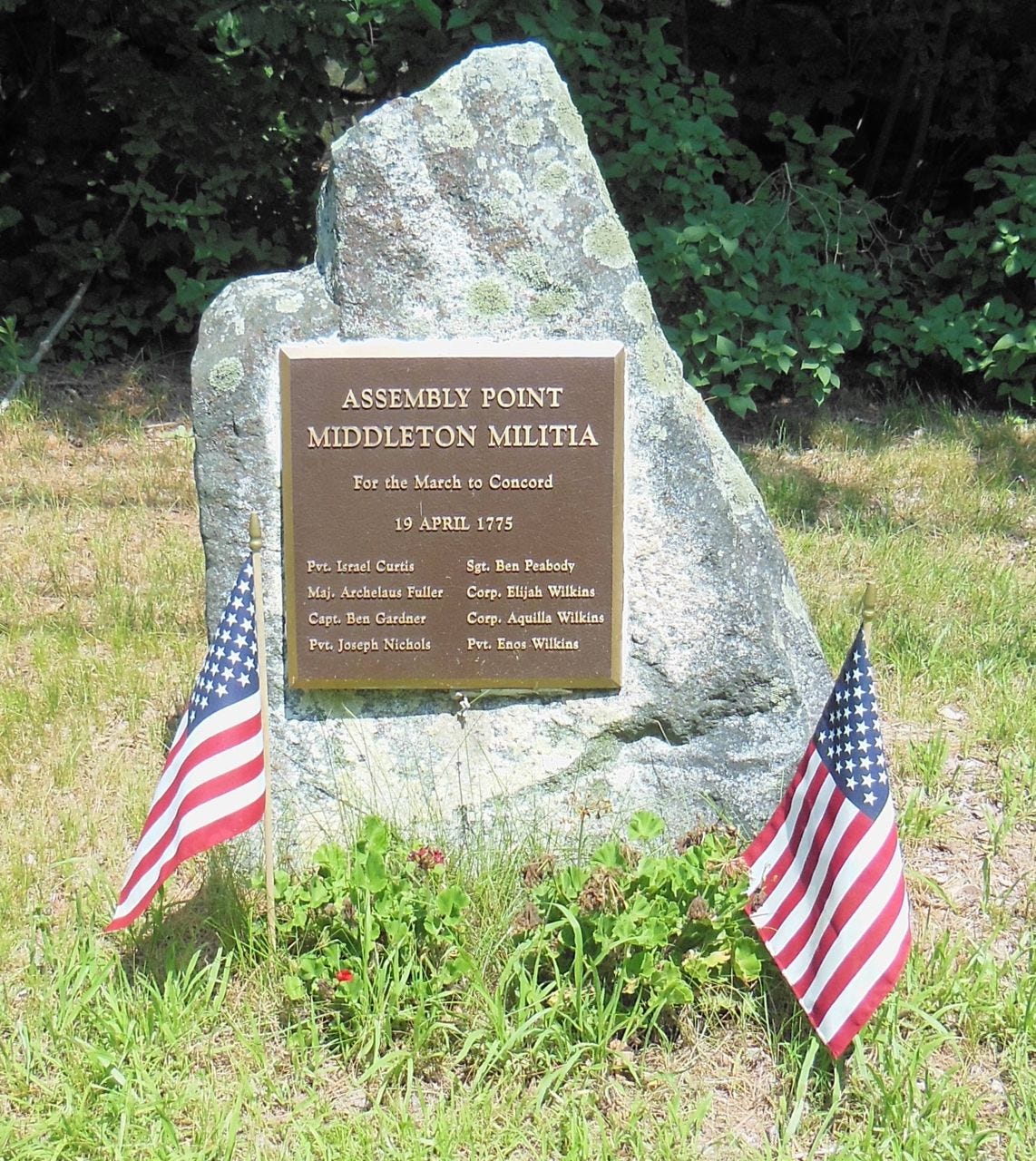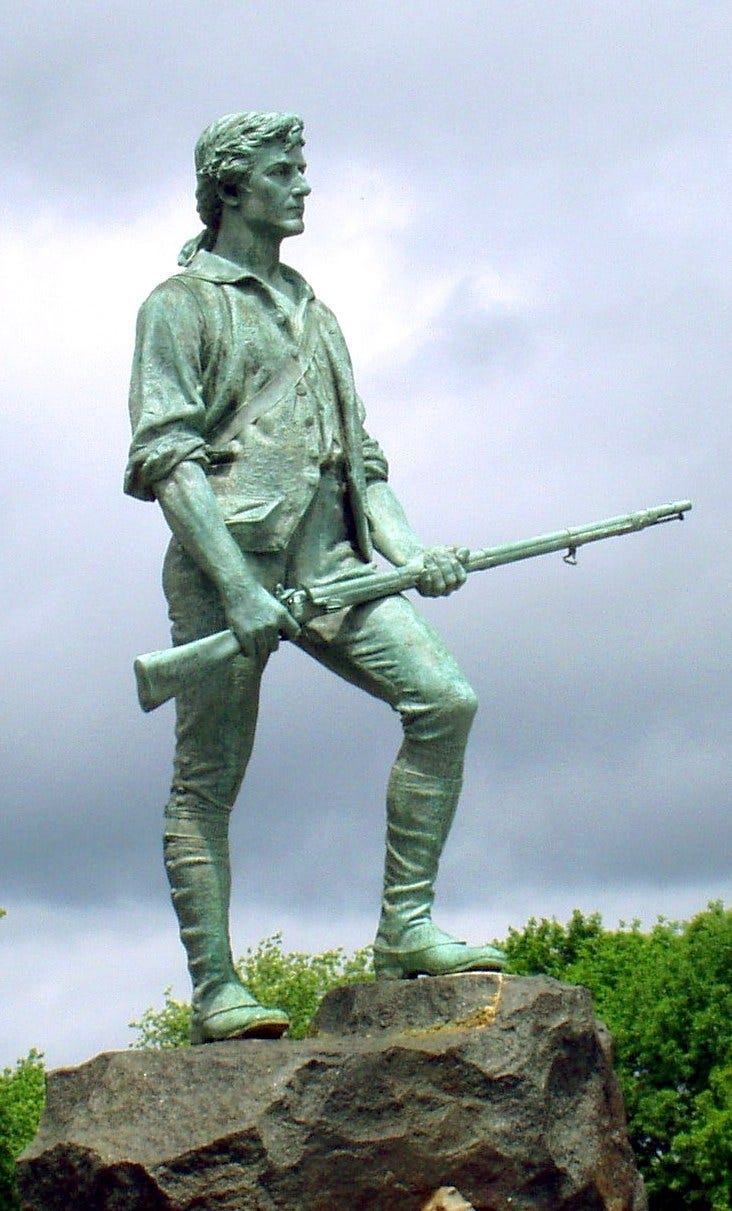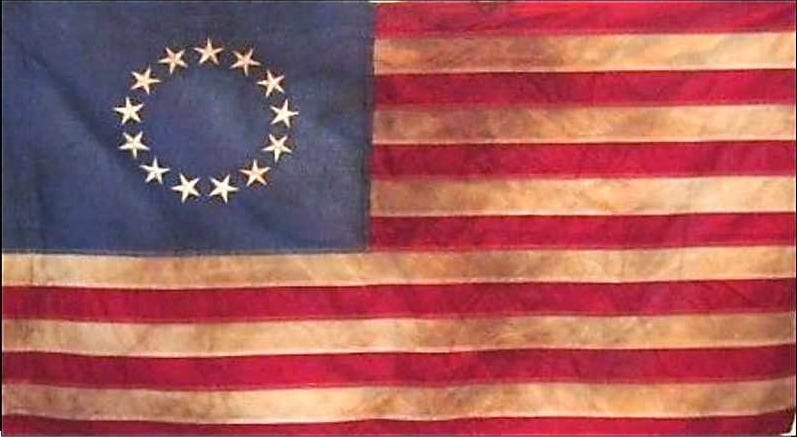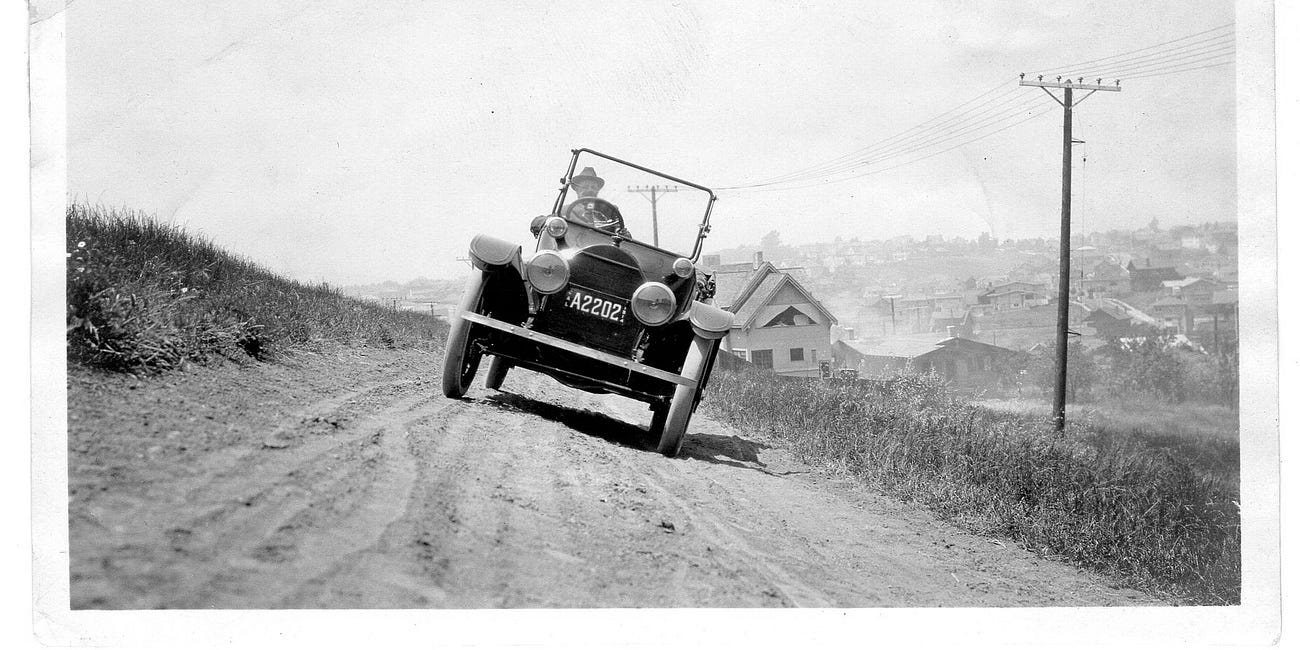Remembering 37 Revolutionary War Patriots in the extended family this July 4, and how to track down yours
We've tracked down 57 percent of our ancestors six generations ago who fought for what they believe in. You can, too. Two of them are women!

July 4
The Fourth of July—also known as Independence Day or July 4th—has been a federal holiday in the United States since 1941, but the tradition of Independence Day celebrations goes back to the 18th century and the American Revolutionary War:
For the better part of the 17th and 18th centuries, the relationship between Great Britain and her North American colonies was firm, robust, and peaceable. The colonies enjoyed a period of “salutary neglect”; meaning that the colonial governments were more or less able to self-govern without intervention from Parliament. This laissez-faire approach allowed the colonies to flourish financially, which in turn proved profitable for the mother country as well. However, this period of tranquility and prosperity would not last.
“Great Britain had amassed an enormous debt following the French and Indian War; so, as a means to help alleviate at least some of the financial burden, they expected the American colonies to shoulder their share. Beginning in 1763, Great Britain instituted a series of parliamentary acts for taxing the American colonies. Though seemingly a reasonable course of action – considering the British had come to the defense of the colonies in the French and Indian War – many colonials were livid at the levying of taxes. From 1763 to 1776, Parliament, King George III, royal governors, and colonists clashed over regulations of trade, representation, and taxation. Despite the growing unrest, many Americans perceived war and independence as a last resort.”
American Battlefield Trust, 3 July 2025 (teaching materials available)
On July 2nd, 1776, the Continental Congress voted in favor of independence, and two days later delegates from the 13 colonies adopted the Declaration of Independence, a historic document drafted by Thomas Jefferson. From 1776 to the present day, July 4th has been celebrated as the birth of American independence.
Starting in the fall of 1774, the Massachusetts legislature, meeting in defiance of the Royal Governor General Thomas Gage, assumed control of the province’s militia forces. On October 26, 1774 they recommended that towns recruit volunteers and “form them into Companies of fifty Privates at the least, who shall equip and hold themselves in Readiness to march at the shortest Notice...” Because they were expected to be ready quickly – “at a minute’s warning...” – they became known as “minutemen.”
On Essex Street in Middleton, Massachusetts, at the roadside in front of the Tragert home, there is a large rock to which is attached a plaque listing the names of the eight Middleton Minutemen who took part in the first armed conflict of the American Revolution on April 19, 1775. The Minuteman Memorial was created by the Middleton Historic Commission.
Middleton’s Minutemen, trained and better quipped than the militia, are:
Major Archelaus Fuller
Captain Benjamin Gardner
Joseph Nichols
Sargent Benjamin Peabody
Corporal Elijah Wilkins
Corporal Aquilla Wilkins
Private Enos Wilkins
Private Israel Curtis
On that day, April 19, 1775, when these men heard that the British had attacked at Concord, they gathered at this site to begin a march to intercept the British. Their route took them through Lynn, Malden, Medford and into Somerville. They arrived too late to fight the British but stayed in Somerville at Winter Hill for two days, sealing it off until relief forces arrived.

It was here at this first battle that British colonists risked their lives and property, defending their ideals of liberty and self-determination. The events of that day have been popularized by succeeding generations as the "shot heard round the world." Often referred to as the "Battles of Lexington, and Concord," the fighting on April 19, 1775 raged over 16 miles along the Bay Road from Boston to Concord, and included some 1,700 British regulars and over 4,000 Colonial militia.
Many of our families’ ancestors took part in that war. The story of your ancestor starts with the historic context faced by your ancestors. That’s the confict, essential to lift your story off the ground. In a narrative, your ancestor must face challenges that lead to the resolution of the story in which they were involved.
We can look up each of these ancestors at Sons of the American Revolution and Daughters of the American Revolution and find out what states they lived in, who their spouses were, when they were born, and when they died. Each year I make progress tracking down new patriots, who were regular folk who rallied together to fight for freedom. With that information, you can link your ancestor to specific events in the war.
Minuteman Elijah Wilkins, listed above, is my 5th great-grandfather. (Aquilla Wilkins is my first cousin eight times removed, and Enos Wilkins is my 2nd cousin eight times removed, according to familysearch.org.) When my grandfather Melton changed his last name from Wilkins to Melton as a young man to honor his grandfather who raised him, Calvin Melton, we temporarily lost a connection to our family history. His service is documented by the Daughters of the American Revolution here:
Military Service
Corporal Elijah Wilkins
19 April 1775Massachusetts Bay Colony
Minuteman Revolutionary War - Served with Captain Benjamin Peabody
Standardized Data
19 April 1775
Massachusetts, United States
DAR Patriot Index #A125558 Assembly Point Minuteman Militia Memorial 162 Essex Street Middleton, Essex County, Massachusetts, 01949 USA
The same thing happened with Kate’s family, and as a result we also recently discovered her family’s patriots, listed under Brame/Cook/Redman, below. There are many more American Revolution patriots in our family trees. Here are the ones we know about:
Remembering our families’ Revolutionary War Patriots – 37 and counting – who fought for independence (verified through DAR and SAR and family history research):
Melton/Wilkins/Reily–
· Col. Archibald McDonald SAR# P-244477
· Captain Samuel Warburton Reily SAR# P-277206
· Robert Reily (Samuel’s father) SAR# P-277205
· Ann Warburton/Reily SAR# P-338150
Qualifying Service Description: Furnished Provisions Additional References: Salley, Stub entries to indents, SC, BOOK L-N, pg 30 Ervin, SC in the Rev, pg 93 Spouse: Robert Reily/Riley; Children: Samuel;· Creighton Winans SAR# P-322275
· Elijah Wilkins DAR#A125558
Brame/Cook/Redman-
· Private Benjamin Franklin Barton SAR# P-110220 (Cook)
· James Andrew Smith SAR# P-292160
· Aaron Redman SAR# P-276513
· James Craig SAR# P-140322
· Edmund Phillips SAR# P-341025
· Richard Doud SAR# P-149578
Ftizgerald-
· William McMichael SAR#P-245101
· Edward Hall SAR#P-172842
· Basil Pitts Prather SAR# P-272984
· William D Dollar SAR#: P-149075
· John Nicholas Whisenant DAR#: A124197
Jacobs-
· William Parkman SAR# P- P-265841
· Malcolm Hunter SAR# P-188448
Kantz/Straub-
· John Adam Fisher SAR#P-157798
· Franz Wilhelm Roth SAR#P-282086
· William McMichael SAR#P-245101
· Judge Emanual Carpenter SAR
· Emanuel Carpenter Jr SAR
· Johann Pieter Stroup SAR
· Johann Jacob Straub SAR
· Matteis Andreas Straub SAR
· George Philip Dotterer SAR
McElrath–
· Gov. John Sevier SAR # P-287281
· Maj. John McDowell SAR # P-244548
· Margaret Virginia O’Neal (McDowell) DAR
Qualifying Service Description: SUFFERED DEPREDATIONS BY THE ENEMY, 1780 Defied the British Additional References: NSDAR #869439 cites: DRAPER, KING'S MOUNTAIN AND ITS HEROES, pg 348 Spouse: Joseph McDowell; Children: Hugh; Hannah; Joseph; Sarah; Elizabeth; Charles; John; Jane;· Gideon Morgan (Minuteman) SAR # P-252205· Gideon Morgan (Minuteman) SAR # P-252205
· Johann Leonard Berkheimer SAR#P-113788
· Simeon Haskell SAR#P-177046
Alden/Smilie–
· Lt. Elisha Alden SAR # P-102106
· Solomon Ellsworth SAR # P-154305· Nathaniel Cornwall SAR # P-139104
If you already work on a family tree, as we do on familysearch.org, track your direct ancestors (usually male, but we have two females who “Defied the British” and “Furnished provisions,” which sounds like the women in my family). If they were born about 1745, start checking names, births, and locations at Sons of the American Revolution and Daughters of the American Revolution and you will be on your way. Have as many details about your ancestors in this time period as possible, as some names are common and knowing where they lived when they were born may help you track down your ancestors.

Do we share any Revolutionary War Patriots? What do you know about your American ancestors during the Revolutionary War? Or write your own Substack about your Revolutionary War Patriots and share the story link below!
Sources:
https://www.history.com/topics/holidays/july-4th
https://www.nps.gov/mima/index.htm
https://www.findagrave.com/cemetery/2586761/minuteman-memorial Public Domain
(https://en.wikipedia.org/wiki/Minutemen#/media/File:Minute_Man_Statue_Lexington_Massachusetts_cropped.jpg) Public Domain
How to write nonfiction narratives about ancestors with drama, flair, grammar – even movies and memoir!
Family history stories are really memoir, and the secret to memoir is that there are two narrators: The one in the past living the stor…
Seven strategies to break through brick walls, grow your family tree, and tell their stories
People tend to group all the passengers on the Mayflower as one group, when in fact there were four groups: The Separatists seeking religious freedom, families and individuals recruited by London merchants, indentured servants, and Mayflower sailors who contracted to stay a year in New Plymouth. I like the way familysearch.org breaks it down and offers …
Unlock your family history with a migration map, research strategies, Ancestry DNA, and putting the pieces together
Let’s begin with the assignment:








Fascinating!